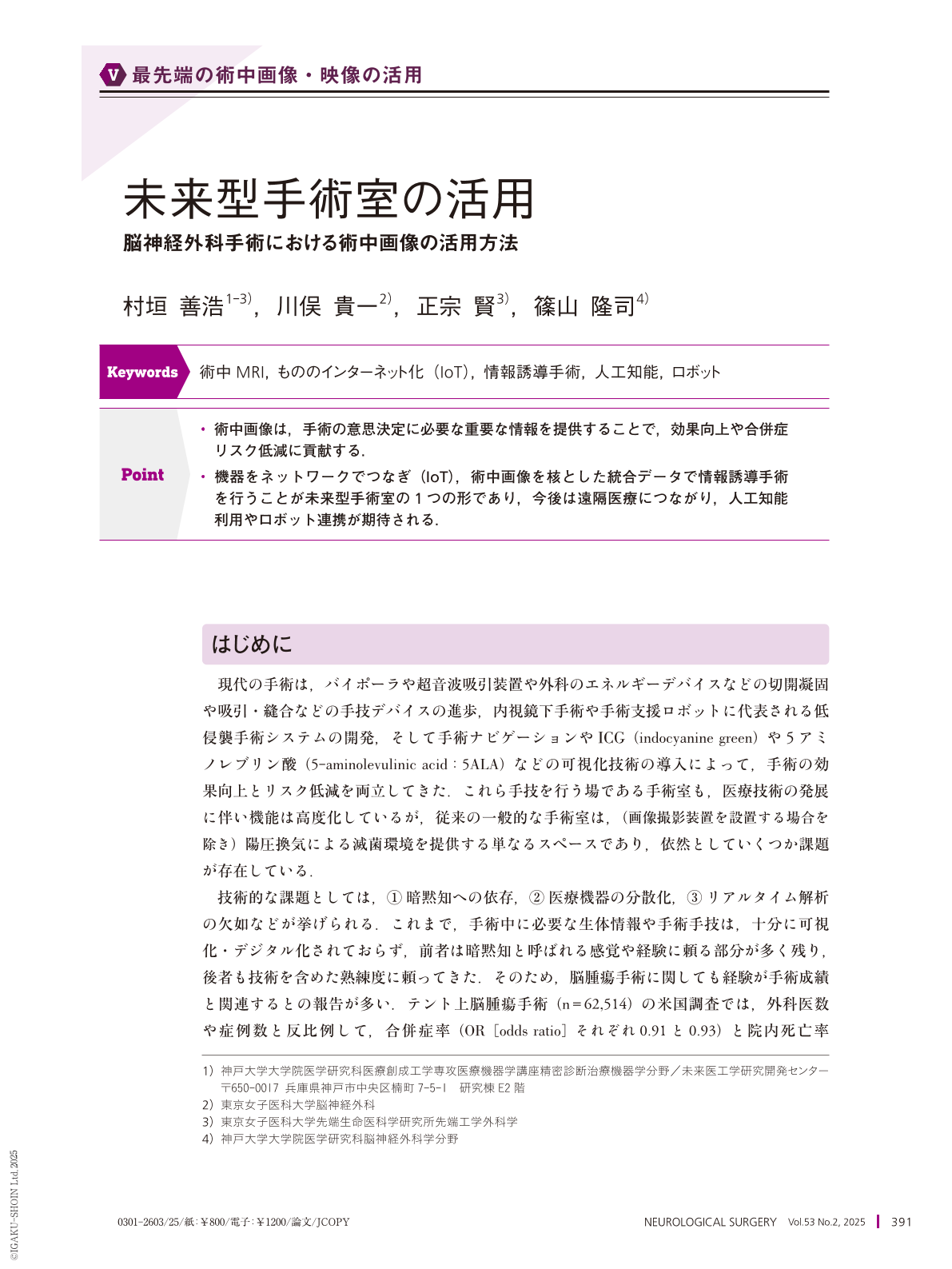Japanese
English
- 有料閲覧
- Abstract 文献概要
- 1ページ目 Look Inside
- 参考文献 Reference
Point
・術中画像は,手術の意思決定に必要な重要な情報を提供することで,効果向上や合併症リスク低減に貢献する.
・機器をネットワークでつなぎ(IoT),術中画像を核とした統合データで情報誘導手術を行うことが未来型手術室の1つの形であり,今後は遠隔医療につながり,人工知能利用やロボット連携が期待される.
Future operating rooms (ORs) should integrate cutting-edge technologies to address the limitations of traditional surgical environments. Leveraging intraoperative imaging, the Internet of Things, and artificial intelligence enables real-time data integration, precise decision-making, and improved surgical outcomes. This approach transforms implicit knowledge into structured and actionable insights, thereby enhancing efficiency. Technologies, such as intraoperative magnetic resonance imaging, hybrid ORs, and surgical robots offer advanced capabilities, reduce complications, and standardize surgical performance. Remote surgery and telemonitoring extend expert care to underserved regions, addressing geographical disparities. However, challenges such as high implementation costs, data security, and standardization, persist. International efforts, such as OPeLiNK, aim to standardize data protocols and interoperability. Future ORs are envisioned as dynamic and intelligent environments that can adapt to complex needs, ensuring enhanced patient safety, clinical outcomes, and equitable healthcare delivery.

Copyright © 2025, Igaku-Shoin Ltd. All rights reserved.


